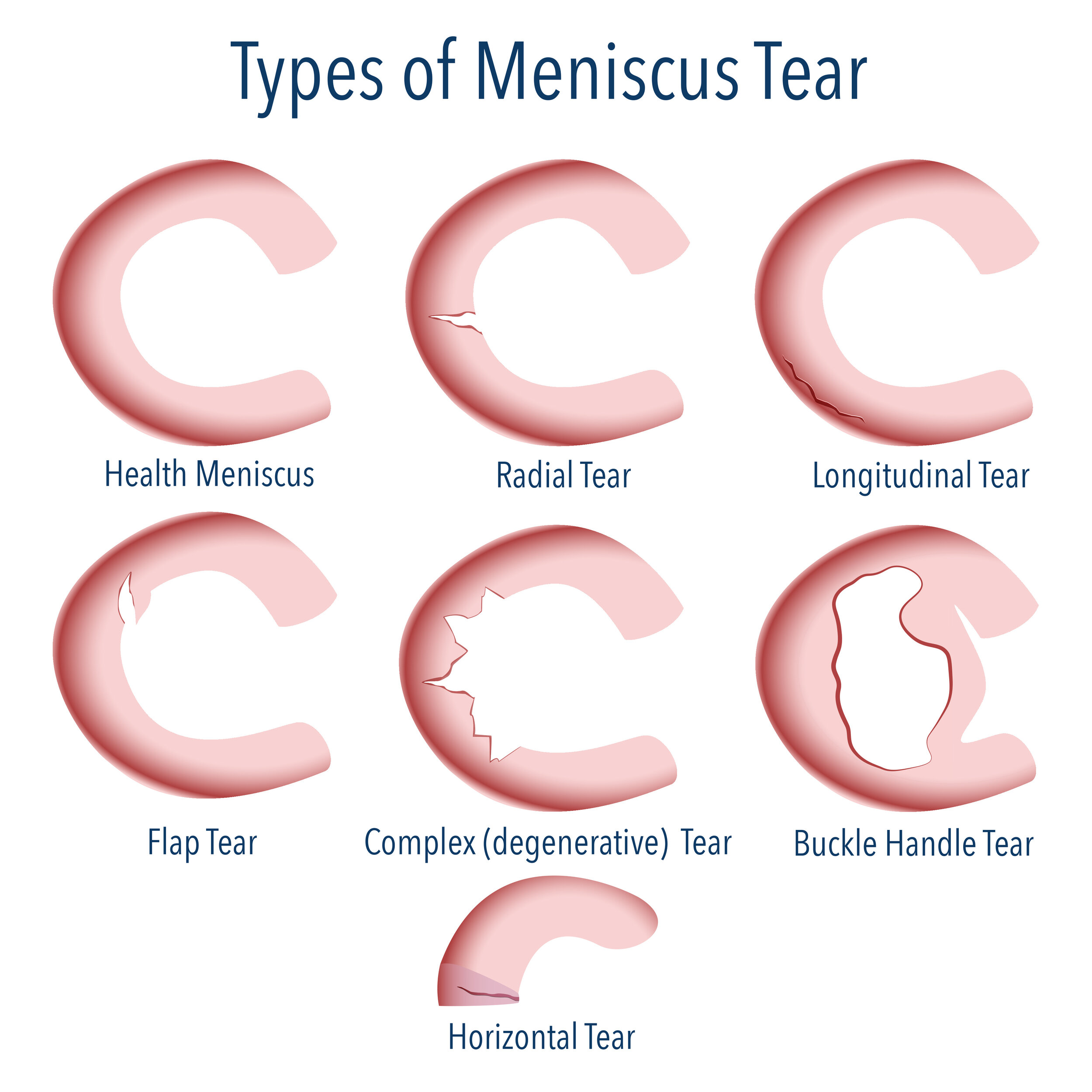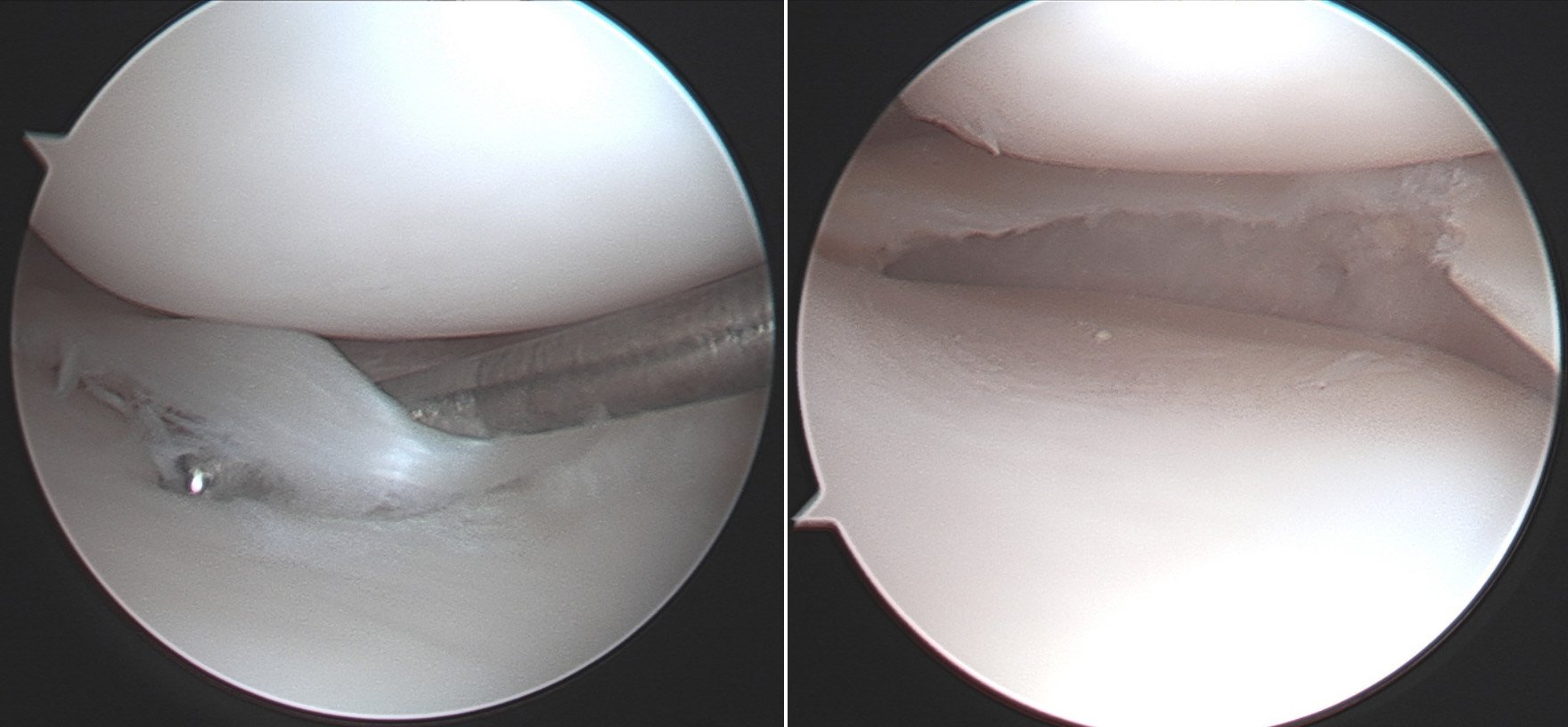Meniscectomy
What is a meniscectomy?
The meniscus acts like a shock absorber in the knee, protecting the cartilage. It is C-shaped, and each knee has a meniscus on the inside (medial) and on the outside (lateral). An acute traumatic knee injury can cause the meniscus to tear. A torn meniscus may cause secondary cartilage damage, knee swelling, locking, or clicking.
With age, the quality of tissue within the meniscus declines. This can cause the meniscus to tear even in the absence of any trauma. This is referred to as a degenerative tear.
A meniscectomy involves removing the torn flap of the meniscus that can cause irritation and pain. As the meniscus protects the cartilage within the knee, only the minimal necessary amount is removed during surgery.
What is involved in arthroscopic meniscectomy?
Arthroscopic meniscectomy is a minimally invasive surgical procedure that is performed to remove a torn or damaged meniscus.
Why is arthroscopic meniscectomy performed?
Arthroscopic meniscectomy is typically performed when a patient has a torn meniscus that is causing pain or discomfort and is not responding to non-surgical treatments such as physical therapy or medications. The procedure removes the damaged portion of the meniscus, allowing the patient to regain normal knee function.
What is involved in arthroscopic meniscectomy surgery?
The steps involved in meniscal repair surgery include:
Diagnostic arthroscopy
2-3 small (< 1cm) portals are created to allow passage of a camera and surgical tools within the knee joint. The whole joint is inspected for damage.
Meniscal resection
In some situations, the torn meniscus is not suitable for repair and the torn portion is therefore trimmed to a stable margin. This can relieve the pain and mechanical symptoms associated with a tear. Trimming the meniscus will reduce its shock absorbing capacity and will put more pressure on the surrounding cartilage. This will cause the cartilage to wear out quicker than normal and lead to arthritis in the knee.
Left: A flap tear in the medial meniscus with the arthroscopic probe pulling on the flap, Right: After the arthroscopic meniscectomy has been performed.
What is my follow-up schedule after the operation?
Approximately 1-2 weeks of leave from work is required for a desk-based job. The recovery process following arthroscopic meniscectomy typically involves a period of rest and physical therapy. Patients can put weight on the affected knee immediately following surgery. You may need to use crutches as needed for the first few days after your operation. Physical therapy exercises are then gradually introduced to help the patient regain strength and flexibility in the knee joint.
2 weeks
The wound dressings will be removed, and the wound will be reviewed to ensure it has healed. At this stage, the sutures will also be removed. Physiotherapy is recommended at this stage to improve your strength and range of motion. A return to running can be commenced 6-8 weeks post-operatively.
Frequently Asked Questions
What are the risks of having meniscectomy surgery? +
Arthroscopic meniscectomy has a high success rate, with most patients experiencing significant pain relief and improved knee function following the procedure. However, it is important to note that not all patients will experience complete pain relief, and there is a chance that the meniscus may tear again in the future.
General complications of meniscectomy surgery can include:
Infection
Although the risk of infection is extremely small following a knee arthroscopy, it can still occur. A deep infection of the knee joint may require surgical washout of the knee and antibiotics.
Bleeding
Bleeding can occur around the arthroscopic port sites or into the knee joint itself. This is usually self-limiting but on rare occasions will require another operation to wash out the accumulated blood.
Deep vein thrombosis and pulmonary embolism
Clots can occur in the deep veins of the leg that may dislodge and occlude the arteries in the lungs. DVT presents as leg pain and swelling after your operation. The diagnosis is confirmed with an ultrasound scan and, depending on the type of DVT, may require treatment with blood thinners.
Specific complications of menisectomy surgery can include:
Osteoarthritis When the meniscus is removed, the cartilage in your knee will have more pressure on it. This can cause the cartilage to wear out and lead to a condition called osteoarthritis over time. It may take several years for these changes to happen.
Numbness around the arthroscopic portals Despite using small (< 1cm) incisions to perform the arthroscopy, small branches of the saphenous nerve that supply the skin overlying the knee can become damaged. This will result in numbness around the incision site. On occasion, the damaged nerve will form into a neuroma that can be painful. If this pain is persistent, surgical removal of the neuroma can be considered.
Persistent Pain, Swelling, and Stiffness A very small percentage of patients experience pain, swelling, and stiffness even after surgery. The operation may not be a success and may need a repeat knee arthroscopy.
Can the meniscus heal on its own? +
For smaller stable tears that are close the periphery of the knee joint where the bloody supply is rich, it is possible that the torn meniscus can heal. This can take 8-12 weeks to happen and is unlikely to occur in larger and more unstable tears.
Is it possible for me to make the torn meniscus worse without surgery? +
A torn meniscus can be made worse, especially in the setting of a concurrent torn ACL. In this situation, the instability in the knee can exert more pressure on the tear and propagate it. This can potentially make a repairable tear irreparable.
What is a meniscal cyst? +
Meniscal cysts usually occur in conjunction with meniscal tears. It is thought that the meniscal tear allows fluid within the knee joint to leak through the tear and cause the cyst to form. If the cyst is large enough, it can cause discomfort from the pressure it exerts on the surrounding soft tissues. Meniscal cysts are treated by attending to the meniscal tear and excising the cyst. Sometimes the cyst can be excised using arthroscopic (key-hole) surgery, and other times an open incision is required.


